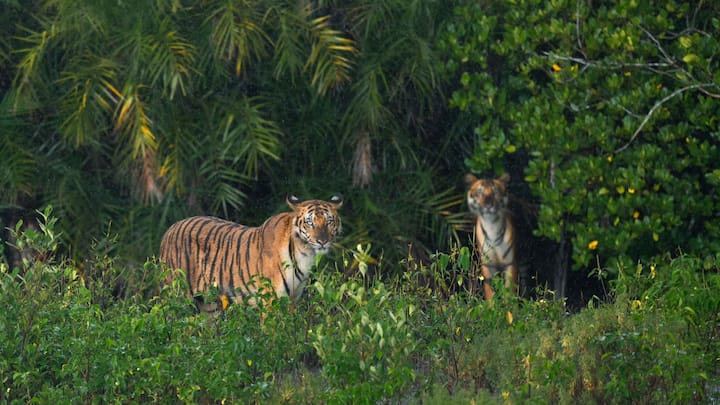Forest plays a significant role in ecological balance, habitat for wildlife, and numerous human occupations. On this International Day of Forests, it is important to celebrate India's rich and varied forest landscapes, from the great and dense mangroves of Sundarbans to the sacred groves of Meghalaya. These forests harbour not only specific flora and fauna but also features of cultural, historical, and environmental importance.
Here are some of the most astonishing forests of India that speak about the beauty and importance of our natural heritage:
ALSO READ: Explore These Offbeat Destinations In Kashmir For Serene Summer Escape
Sundarbans, West Bengal:

Spread across India and Bangladesh, Sundarbans is the largest mangrove forest in the world and is a UNESCO World Heritage site. Famous for the Royal Bengal tigers, this vast delta covers an area of 40,000 sq km and contains various types of wildlife, including 260 bird species. The mangroves play an important part in coastal protection and biodiversity conservation.
Jim Corbett National Park, Uttarakhand:
Oldest among all the national parks of India, Jim Corbett came into existence in the year 1936 and became the first park to be included under Project Tiger. Best characterised by wet deciduous forests, it houses a wide variety of over 50 species of mammals and 580 species of birds. This biodiversity hotspot has a key role to play in wildlife conservation and ecotourism.
Khasi Hills, Meghalaya:
Known as the 'Scotland of the East', the Khasi Hills boast verdant areas, fog-laden valleys, and the wettest place on earth, Cherrapunji. The Khasi tribe resides here and has a peculiarly matrilineal culture. Rich with biodiversity, the forests here are crucial for a stable ecological balance in the region.
Kanha National Park, Madhya Pradesh
Kanha National Park, the true inspiration behind 'The Jungle Book', is among India's best tiger reserves. Established in 1955, the park became the lifesaver of the endangered Barasingha deer population. Vast grasslands and dense forests are found here, adding to the thriving ecosystem.
Pichavaram Mangrove Forest, Tamil Nadu
Pichavaram is the second largest mangrove forest in the world, which has 50 islands and 4,400 canals. It acted as a natural shield of the country during the tsunami of 2004, thus proving the importance of mangroves in coastal protection. It contains many diverse species of birds and promotes eco-tourism.
Gir National Park, Gujarat
Gir National Park is the last stronghold of the majestic Asian lions; hence it forms one of the most important wildlife conservation areas in India. The area was established in 1965. This dry deciduous forest has successfully restored its lion population along with leopards and a unique species of antelope.
Mawphlang Sacred Forest, Meghalaya
It is an ancient Khasi sacred grove over an area of 192 acres and reputed to be protected by a local deity. Nothing can be removed from the forest, preserving the pristine ecosystem. The monoliths inside the grove signify age-old tribal traditions, making it an equally cultural and ecological treasure.


